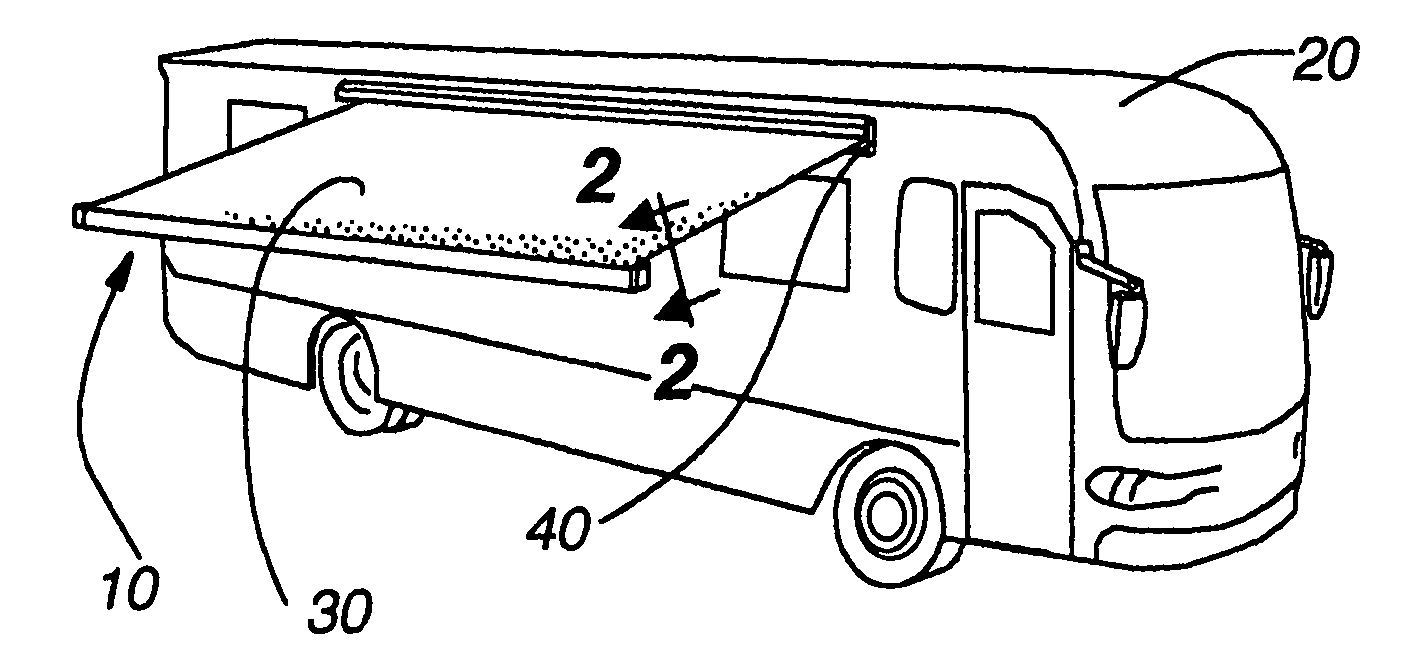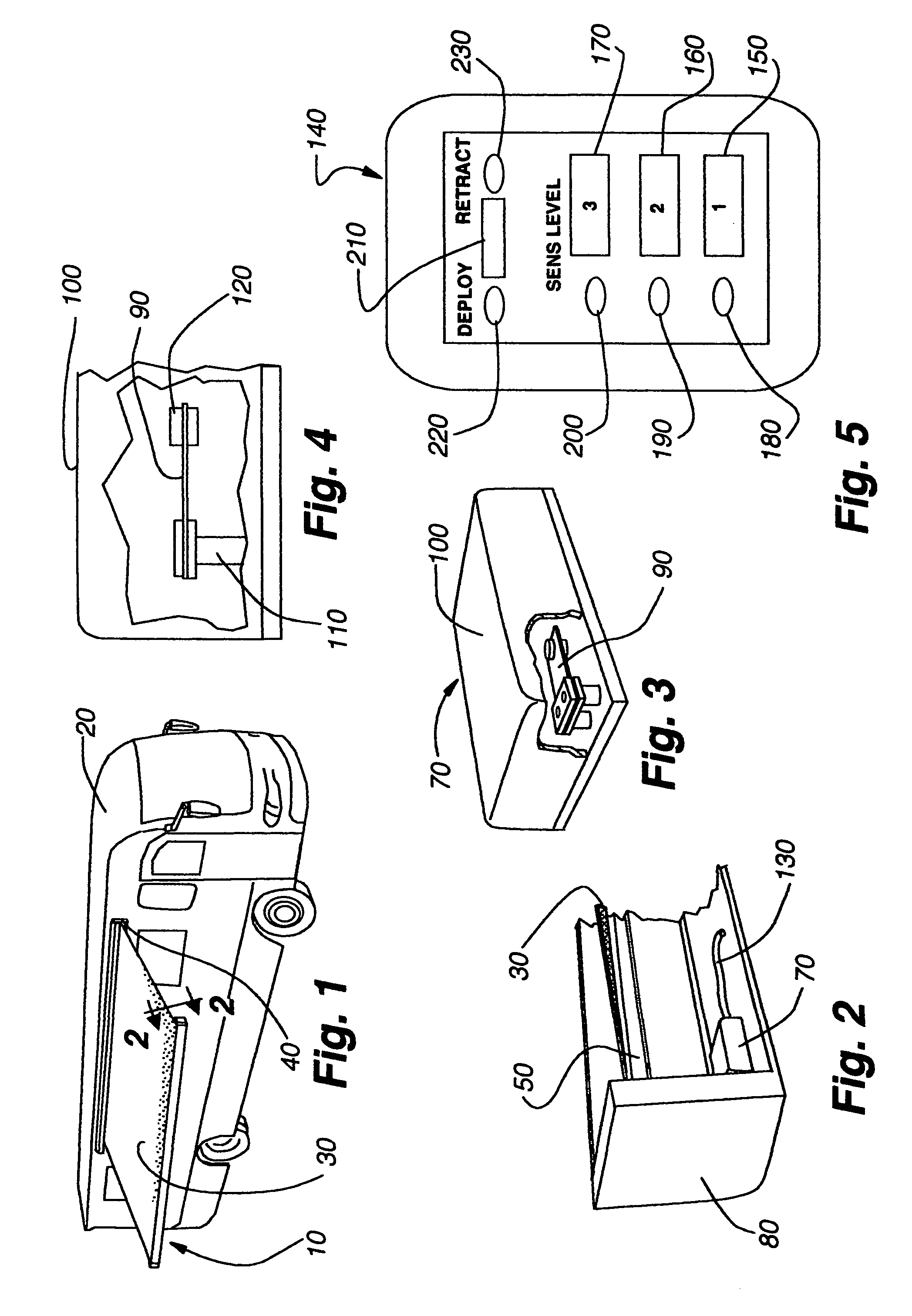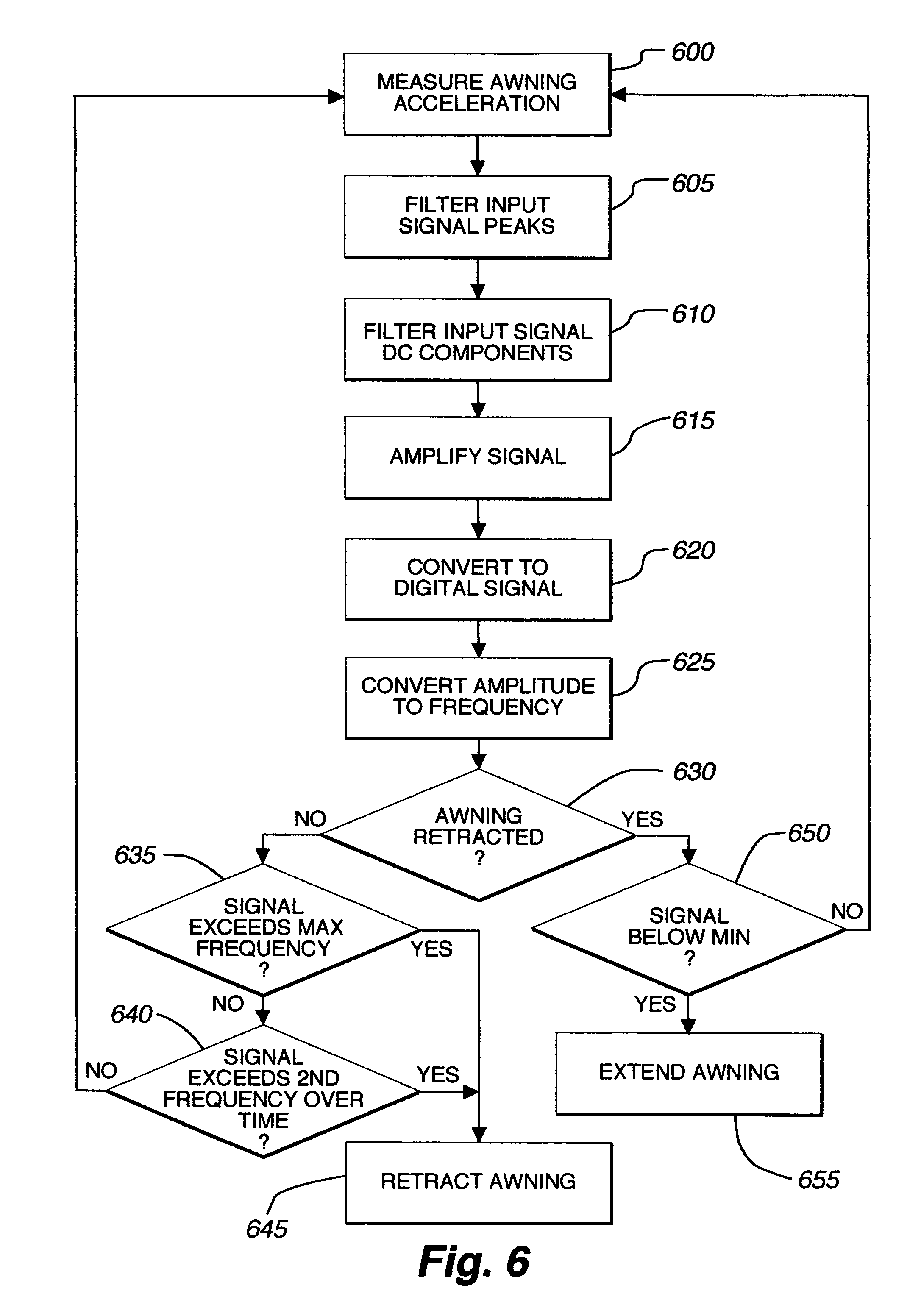Apparatus and method for retracting awning
a technology for retracting awnings and awnings, applied in the direction of motor/generator/converter stoppers, dynamo-electric converter control, instruments, etc., can solve problems such as damage to awnings, and achieve the effect of reducing crosswind
- Summary
- Abstract
- Description
- Claims
- Application Information
AI Technical Summary
Benefits of technology
Problems solved by technology
Method used
Image
Examples
embodiment 70
[0022]The piezoelectric sensor 90 is generally electrically connected to a motor controller (not shown). The present embodiment 70 uses a standard telephone cord 130 to connect the sensor 90 to the motor controller, although alternative connections may be used in different embodiments. For example, alternative embodiments might employ a single-or multi-strand conductor terminating in a cable prong, RCA jack, coaxial input, and so forth. Other embodiments may wirelessly couple the sensor 90 and motor controller, for example, by means of a radiofrequency (RF) or infrared transmitter.
[0023]The motor controller generally activates and / or deactivates the previously-mentioned motor, which in turn is operative to retract (and, in some embodiments, extend) the awning 10. The motor controller activates the motor in response to an input signal. Parameters for activating the motor are described in more detail below with respect to FIG. 6.
[0024]In the present embodiment, the signal does not pas...
embodiment 280
[0054]Alternate embodiments of the conditioning circuit 230 may omit one or more of the aforementioned circuit elements. For example, the embodiment 280 shown in FIG. 8 lacks a highpass filter 260. Similarly, alternate embodiments may amplify the signal additional times, as shown in FIG. 8 with the addition of a second gain amplifier 290.
PUM
 Login to View More
Login to View More Abstract
Description
Claims
Application Information
 Login to View More
Login to View More - R&D
- Intellectual Property
- Life Sciences
- Materials
- Tech Scout
- Unparalleled Data Quality
- Higher Quality Content
- 60% Fewer Hallucinations
Browse by: Latest US Patents, China's latest patents, Technical Efficacy Thesaurus, Application Domain, Technology Topic, Popular Technical Reports.
© 2025 PatSnap. All rights reserved.Legal|Privacy policy|Modern Slavery Act Transparency Statement|Sitemap|About US| Contact US: help@patsnap.com



